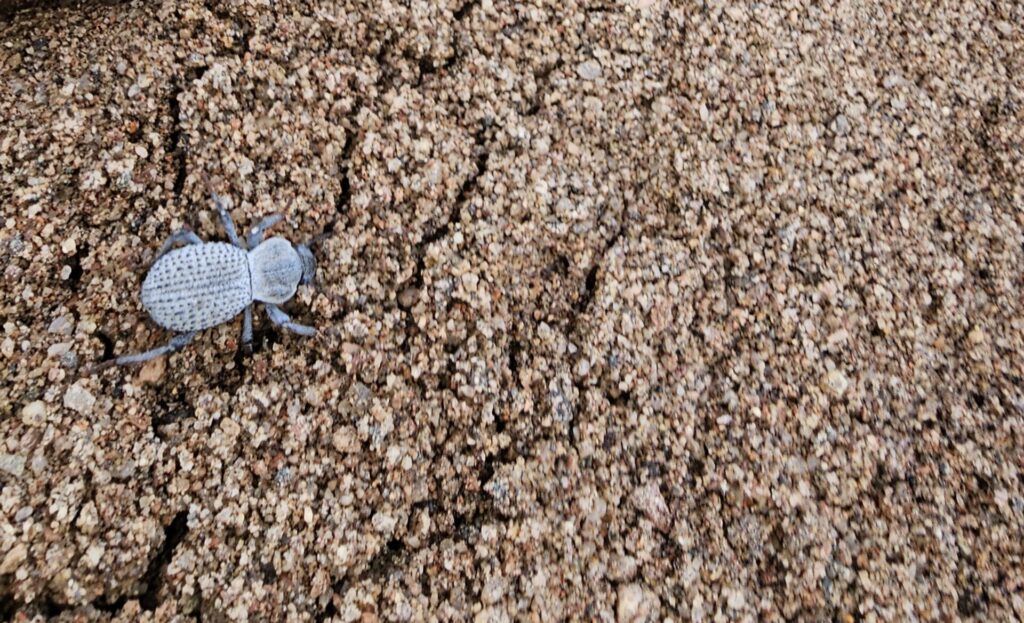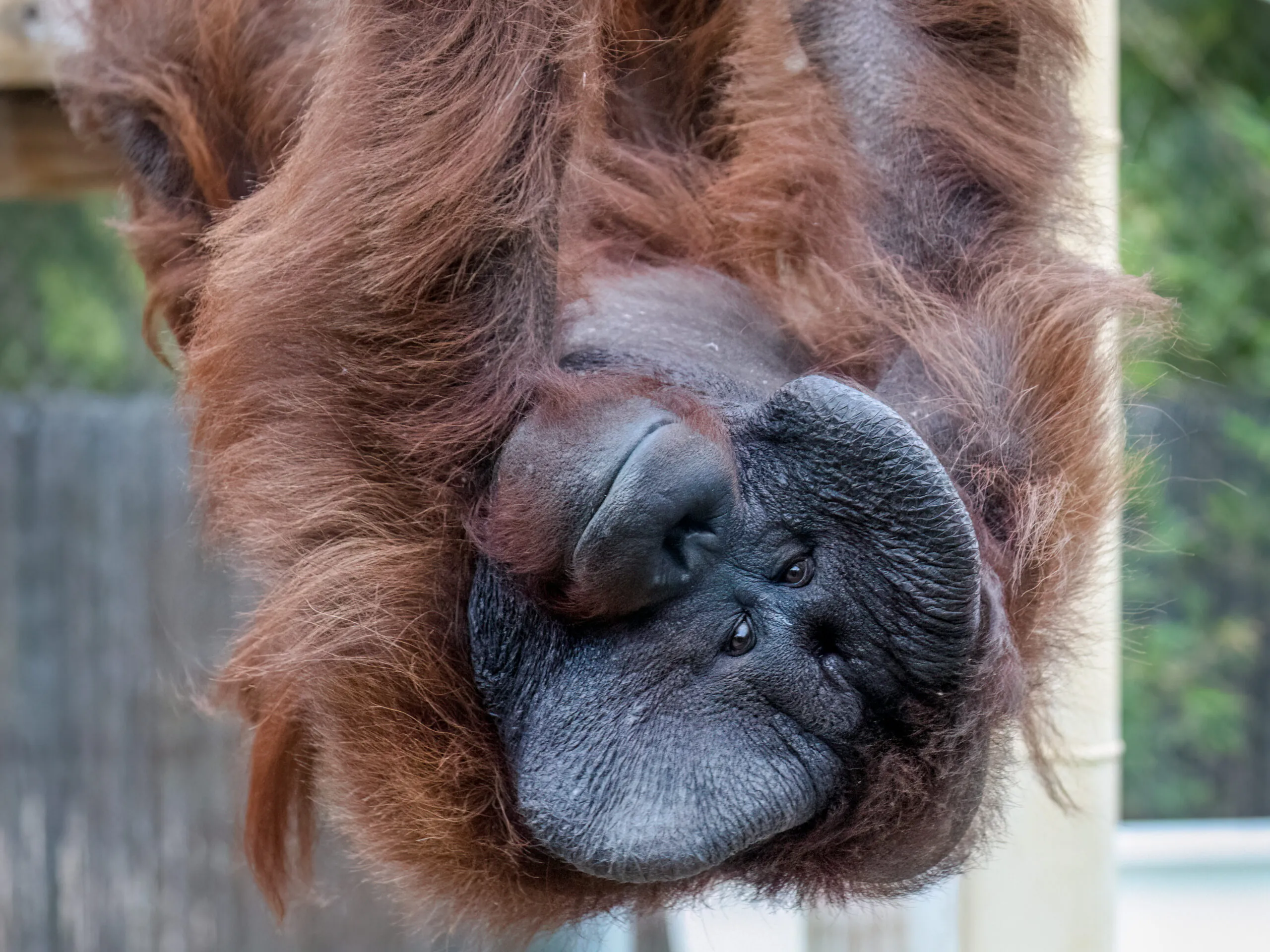Blue Death-Feigning Beetle
Asbolus verrucosus
Beetle Blue Blockers
Blue death feigning beetles secrete a waxy coating that gives them their characteristic blue coloration and acts as a “sunblock” to keep them from drying out in their arid desert environment. When these beetles get wet, the waxy coating is washed off, and they turn black! You might not recognize them after a rain, but don’t worry for the beetles; they can secrete more waxy coating within the next couple of weeks as their habitat dries out.
Possum-Playing Prey
It’s a tough world out there for a beetle. Small and unprotected, death-feigning beetles are prey animals for many predators. They employ a strategy seen among many animal groups when threatened; they play dead. They really ham it up too, lying fully on their back with legs pointed straight up to the sky in an apparent effort to remind the world how truly unappetizing a dead beetle can look. It works too! Many spiders and other predators prefer live prey and will often ignore (what appears to be) a dead beetle.
Darling Desert Darklings
How many kinds of beetles are there? The truth is we don’t really know, but we do know there are a lot. Scientists have described over 350,000 different species of beetle to date, and we know there are plenty more to discover. That number accounts for over 20 percent of all described organisms on earth, including plants and fungi! Blue death-feigning beetles are just one species in a large group called darkling beetles. There are over 100 different beetle groups, including scarab beetles, longhorn beetles, click beetles and bark beetles, to name a few.

Diet: decaying vegetation, lichen, moss
Zoo Diet: starch, veggies, fruits, romaine
Habitat: deserts
Length: .7 – .9 in

Plan your visit today!
The Phoenix Zoo is one of the largest non-profit zoos in the U.S., caring for over 3,000 animals, with nearly 400 species represented, including many threatened/endangered species.







